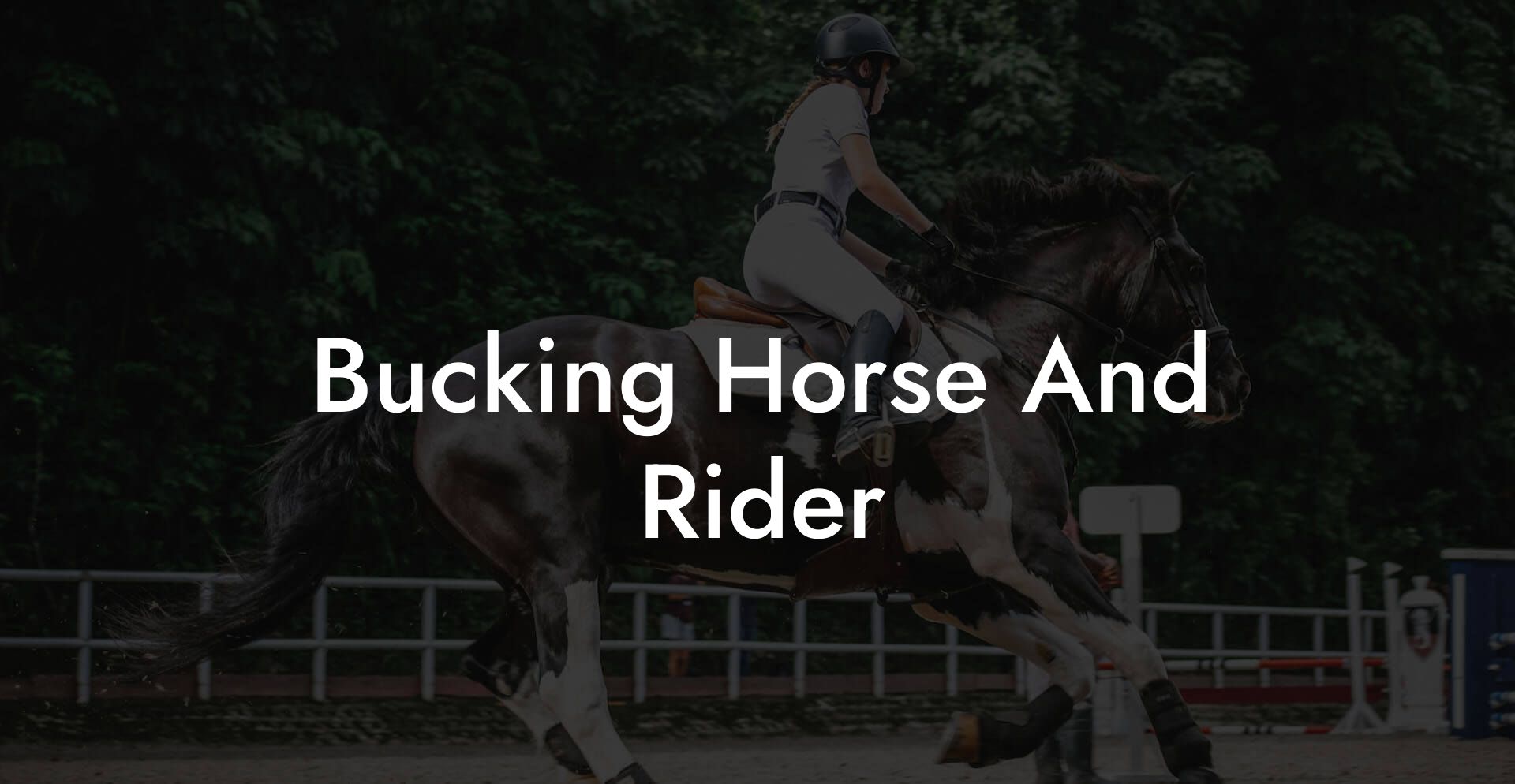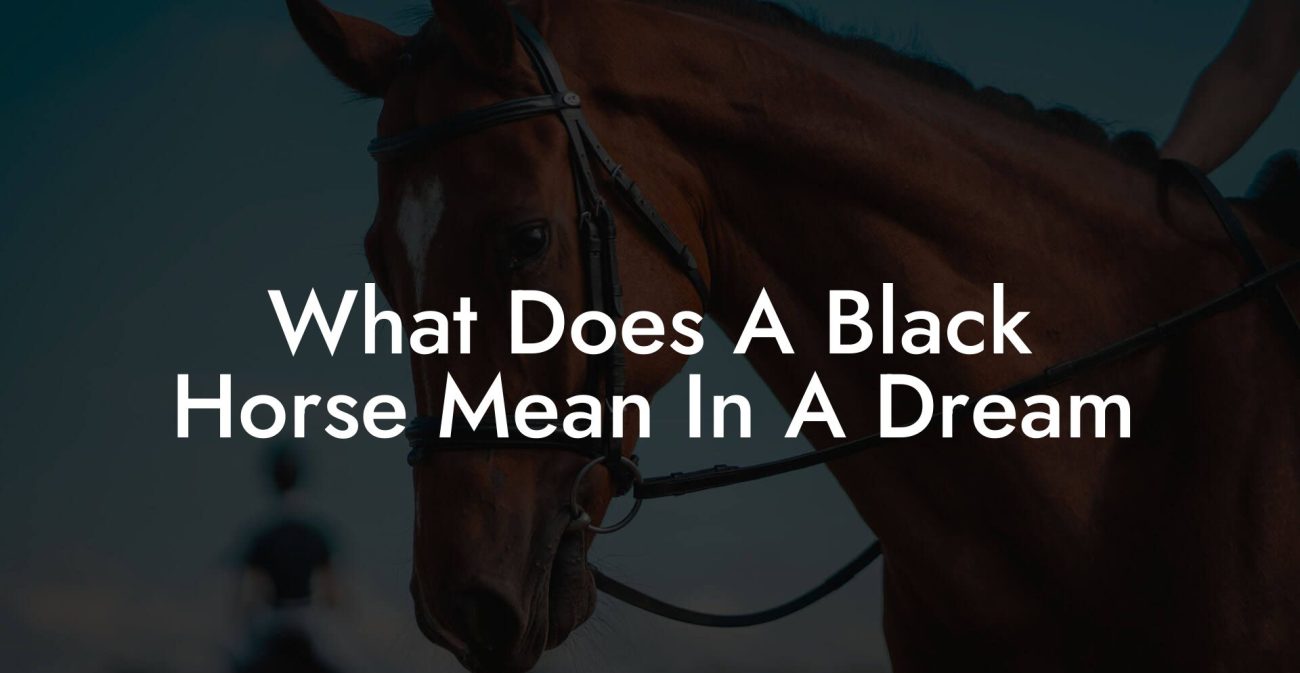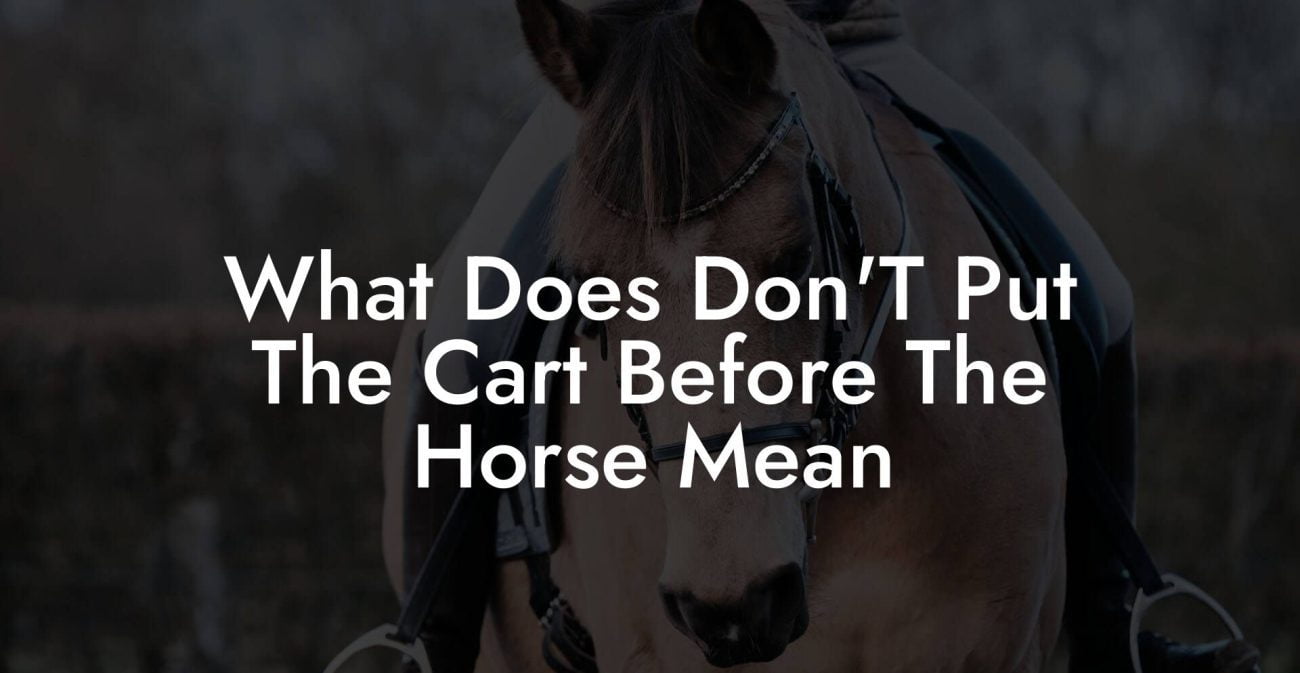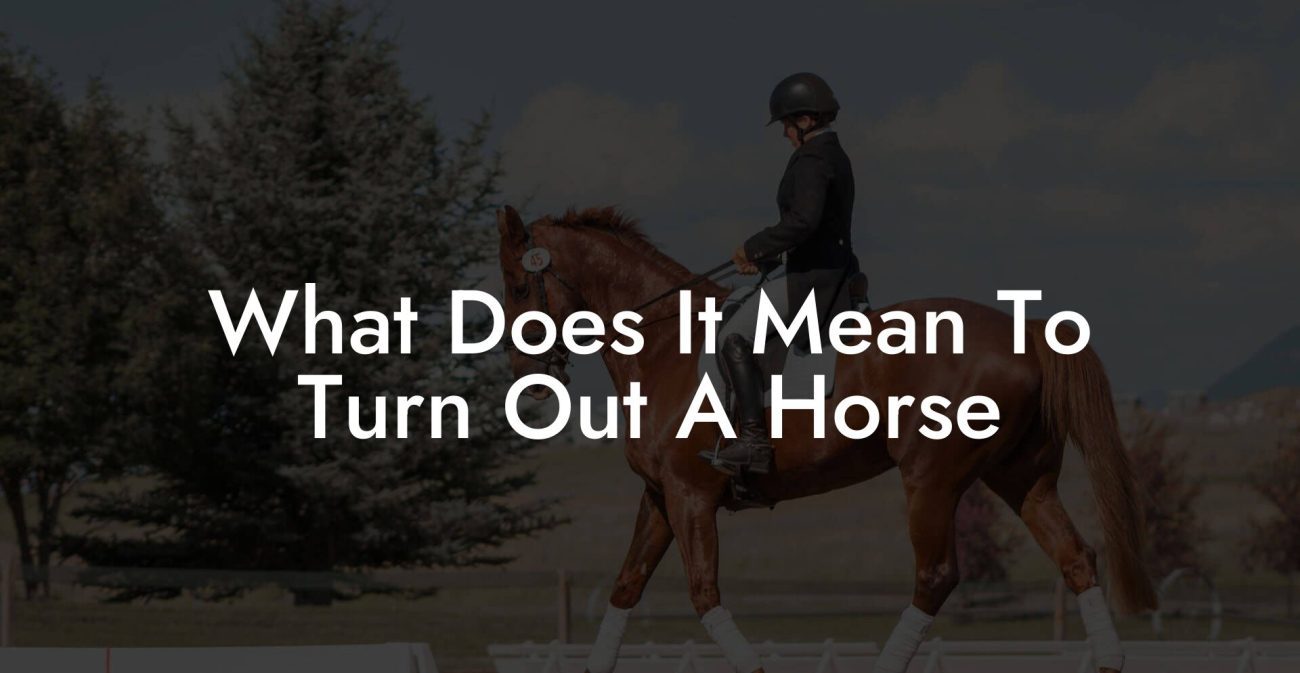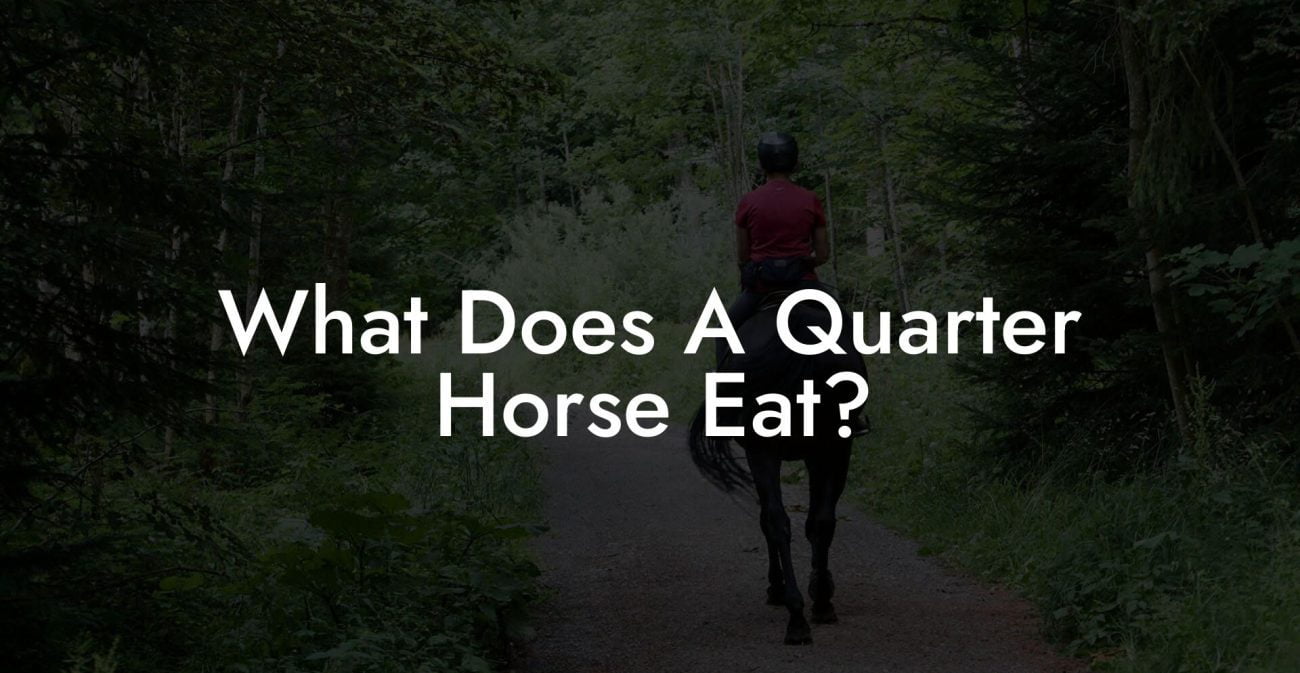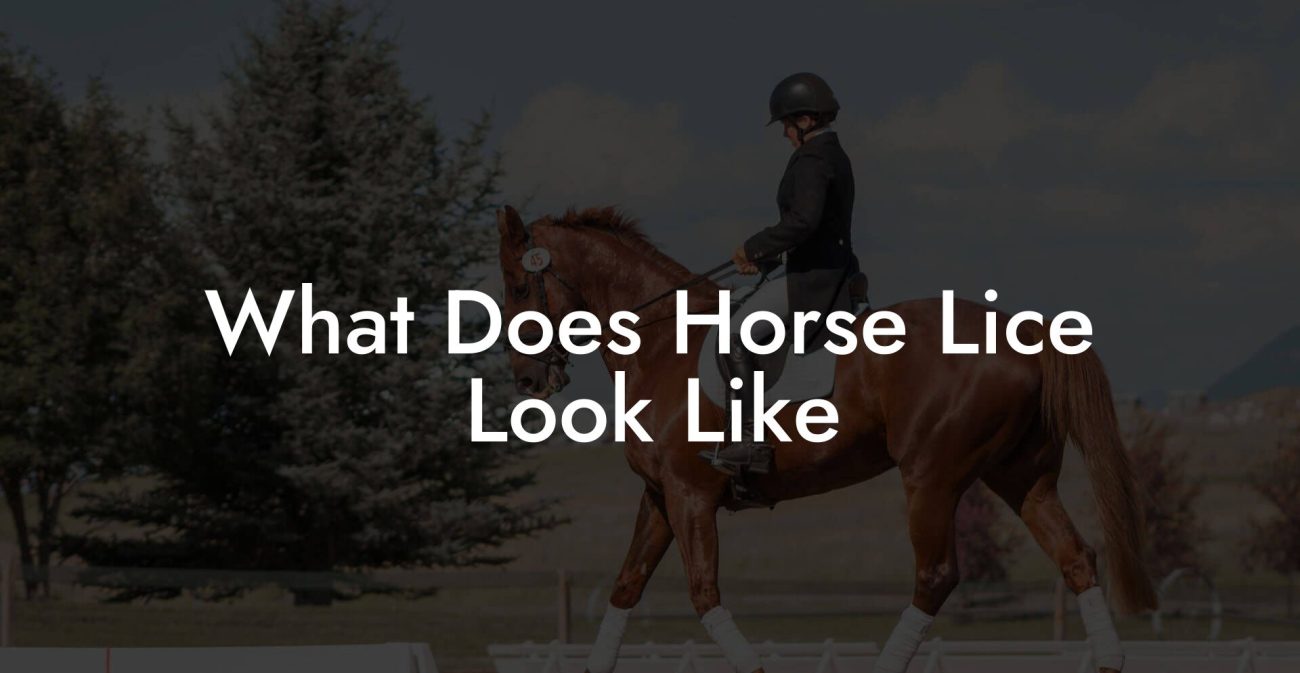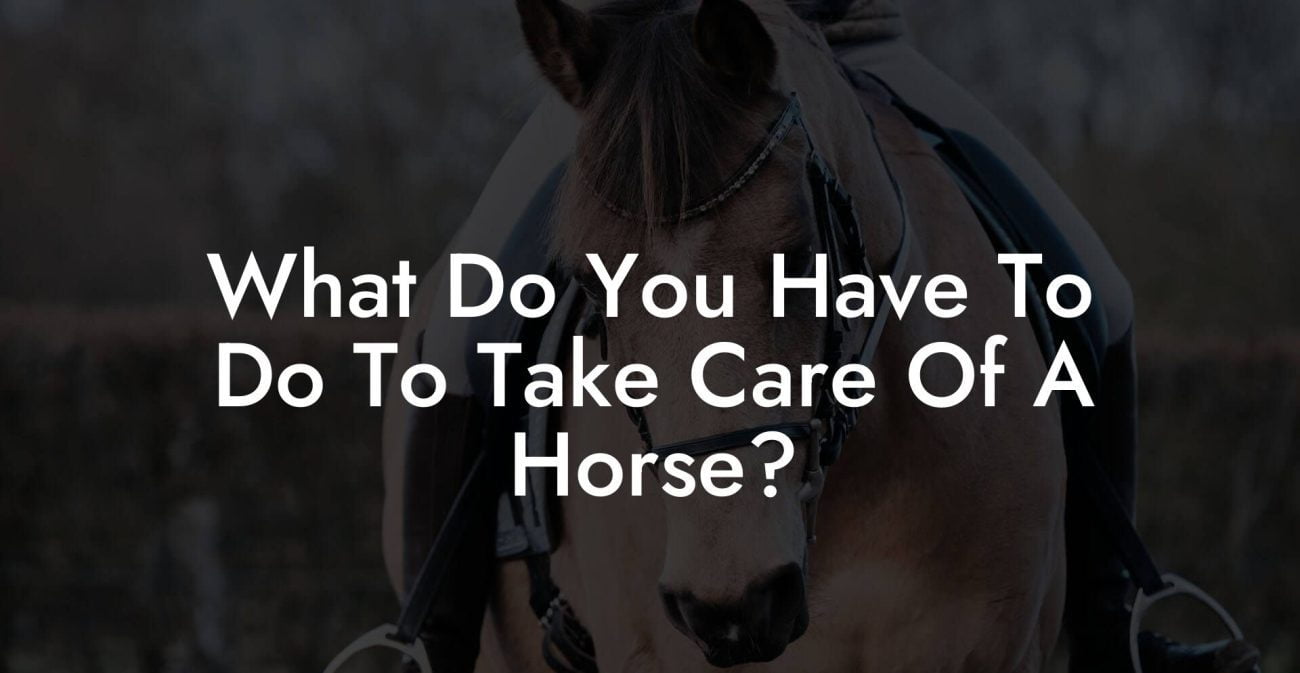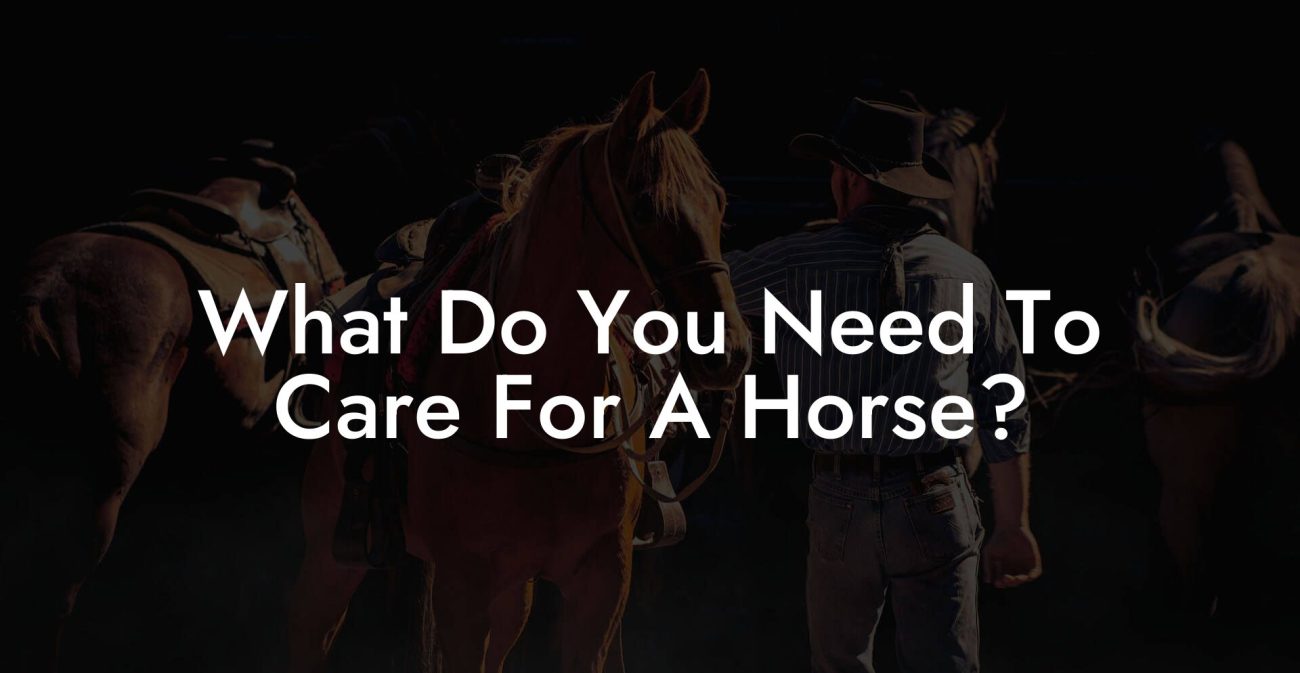Ever felt the raw thrill of riding a horse that bucks with wild abandon, yet shares an unspoken bond with you as its rider? Picture the synergy between a spirited equine companion and a fearless rider who understands that caring for a horse goes far beyond just saddling up. In today’s fast-paced, Insta-worthy world, embracing the authentic lifestyle of equine care requires a cool blend of traditional wisdom, modern know-how, and a generous dash of humor to keep things real. Whether you’re a seasoned equestrian or a Gen-Z newbie eager to learn how to care for a horse from hoof to mane, this guide is your ultimate playbook to understanding the dynamic world of the bucking horse and rider.
Quick Links to Useful Sections
- Meeting the Bucking Horse: Redefining Your Equine Companion
- Understanding Equine Behavior: What Makes a Bucking Horse Tick?
- The Fundamentals of Equine Care: Beyond Riding Techniques
- Grooming: The Art of Making Your Horse Look and Feel Fabulous
- Nutrition: Fueling the Horse for Peak Performance
- Healthcare and Preventive Medicine: Keeping Your Horse in Top Shape
- Riding Techniques and Safety: The Rider’s Role in Equine Harmony
- Mastering the Basics: Balance, Posture, and Communication
- Dealing with Bucking: Safety Measures and Responsive Training
- Harnessing Technology in Modern Equine Care
- Wearable Health Monitors and Tracking Devices
- Online Communities and Digital Resources
- Holistic Equine Care: Integrating Mind, Body, and Environment
- Mind-Body Connection in Horses
- Holistic Training Practices
- Case Studies: Real-Life Tales from the Stable
- Case Study 1: Taming the Wild – From Rebellious Bucking to Graceful Gallops
- Case Study 2: The Power of Connection – Bridging the Gap Between Horse and Rider
- Case Study 3: Overcoming Setbacks with a Holistic Approach
- Designing a Personalized Equine Care Plan: Strategies for the Modern Rider
- Step 1: Comprehensive Assessment
- Step 2: Setting Clear, Achievable Goals
- Step 3: Implementing a Multifaceted Strategy
- Step 4: Continuous Monitoring and Adjustment
- Resources and Community Support: Your Next Steps
- Top Online Communities and Forums
- Educational Websites and Blogs
- Local Stables and Equestrian Centers
- Mobile Apps and Digital Tools
- Frequently Asked Questions about Bucking Horses and Holistic Equine Care
- Your Journey with a Bucking Horse: Embrace the Adventure
Meeting the Bucking Horse: Redefining Your Equine Companion
The phrase “Bucking Horse And Rider” conjures up dozens of images, wild, untamed animals defying convention while forging their own paths. But behind every bucking horse’s defiant leap is a creature with unique needs, personality, and an unmistakable charm. Caring for a horse isn’t simply about discipline or drilling in techniques; it’s about developing an intimate connection and learning to speak the language of your equine friend. In this modern age, it’s more than just riding, it’s about discovering an authentic lifestyle that honors the natural spirit of the horse.
Today’s approach to equine care embraces both time-tested traditions and innovative, holistic methods. It’s about balancing the thrill of that buck with steady practices, from proper grooming and nutrition to advanced training techniques that safely harness a horse’s energy. In embracing the bucking horse and rider journey, you’re not merely learning how to care for a horse; you’re cultivating a partnership steeped in respect, consideration, and mutual growth.
Whether you're intrigued by the raw power of a bucking stallion or the playful antics of a spirited pony, every moment you invest in learning proper care techniques can transform challenges into rewarding experiences. Let’s dive into the multifaceted world of equine care that caters to both horse and rider.
Understanding Equine Behavior: What Makes a Bucking Horse Tick?
Before you can truly bond with your horse or master the art of riding, it’s essential to understand the extraordinary temperament and behavior of these magnificent creatures. Horses are complex beings with varied personalities, and knowing what triggers a buck or why a horse might act out is the first step toward building a trusting relationship.
A bucking horse might display such behavior for several reasons:
- Instinctual Behavior: Some horses naturally react against confinement or pressure, especially if they’re not used to certain riding styles.
- Physical Discomfort: Improper riding techniques, unsuitable tack, or even underlying health issues can lead to discomfort and trigger bucking.
- Excitement and Energy Release: Especially common among younger horses, bucking can be an expression of exuberance or an outlet for excess energy.
- Resistance to Training: A lack of proper guidance or inconsistent training can result in a horse expressing its frustration through bucking.
Understanding these factors is crucial to developing a well-rounded care strategy. Instead of reacting to bucking as mere defiance, it’s important to view it as a mode of communication. A horse may be signaling that something is amiss in its training regimen, its environment, or its physical comfort. By adopting an empathetic approach, riders can transform these challenges into opportunities for growth and learning.
The Fundamentals of Equine Care: Beyond Riding Techniques
The world of equine care is as dynamic as the horses themselves. For the modern rider and horse enthusiast, knowing how to care for a horse is equally about aesthetics as it is about function. Equine care encompasses a wide range of practices, including grooming, nutrition, training, healthcare, and even mental well-being.
Grooming: The Art of Making Your Horse Look and Feel Fabulous
Grooming isn’t just a chore, it’s a bonding ritual. For the bucking horse and rider duo, regular grooming sessions are a chance to connect, communicate, and ensure that your horse is healthy both on the inside and out. Start with a good brush to remove loose hair and to stimulate blood circulation. Key grooming tasks include:
- Brushing: Regular brushing helps remove dirt, prevent matting, and provide an opportunity to check for injuries.
- Hoof Care: A well-maintained hoof is critical. Clean and inspect hooves frequently to prevent issues such as cracks or infections.
- Bathing: While horses don’t need daily baths, periodic washing removes sweat and environmental debris. Remember to dry them thoroughly after a wash.
- Tail and Mane Maintenance: Keeping the mane and tail detangled promotes not just a sleek look but also prevents skin irritations.
Incorporating grooming into your routine can also serve as a meditative time, allowing both the horse and the rider a moment of quiet reflection away from the hustle and bustle of everyday life.
Nutrition: Fueling the Horse for Peak Performance
Equine nutrition is no less than an art form. A balanced diet is crucial for maintaining muscle strength, energy levels, and overall health. For horses known for their energetic bucking or vigorous activities, nutrition becomes even more critical. Focus on:
- Quality Forage: High-quality hay and pasture should form the basis of your horse’s diet.
- Grain and Concentrates: These should supplement, not replace, the natural forage, particularly for horses requiring extra energy.
- Vitamins and Minerals: Ensure that your horse receives the necessary nutrients to support muscle repair and immune function.
- Hydration: Fresh, clean water is essential, especially after rigorous exercise.
Consulting with an equine nutritionist can provide personalized guidance, ensuring that your horse’s dietary needs align with its energy expenditure and overall health regimen.
Healthcare and Preventive Medicine: Keeping Your Horse in Top Shape
Regular check-ups are a must. From routine vaccinations to dental care, staying on top of your horse’s bi-annual or annual health appointments will help catch potential issues early on. Key areas include:
- Vaccinations and Deworming: Establish a schedule with your veterinarian to safeguard your horse against common diseases.
- Regular Dental Checks: Equine dentistry is essential, as dental issues can affect chewing, nutrition, and overall health.
- Hoof Care: Regular visits from a farrier are non-negotiable. Managing hoof health prevents lameness and other complications.
- Injury and Healing: Adapt your care routine if your horse sustains an injury; consult professionals for rehabilitation techniques.
By taking a proactive approach to healthcare, you ensure that your horse remains in the best possible condition, ready for every adventure and every buck.
Riding Techniques and Safety: The Rider’s Role in Equine Harmony
While understanding the inner workings of your horse is essential, the art of riding also carries its own set of challenges and intricacies. For modern riders striving to master the synergy of a bucking horse and rider relationship, developing sound riding techniques is paramount.
Mastering the Basics: Balance, Posture, and Communication
A foundational aspect of riding is a well-aligned posture. Whether you’re riding a gentle steed or a spirited bucking horse, maintaining your balance is critical. Here’s how:
- Core Strength: Build a robust core through exercises like Pilates or yoga. A strong midsection stabilizes you and allows for smoother transitions.
- Leg Position: Your legs provide subtle cues to the horse. Build awareness of your leg positioning to effectively communicate with your equine partner.
- Hand Independence: Keep your hands relaxed yet responsive. Steering, and reinforcing cues with subtle pressure, ensure you remain connected with your horse’s movements.
Ultimately, riding is less about force and more about finesse. It’s a delicate dance of pressure and response, a blend of technique, timing, and communication that allows both you and your horse to move as one.
Dealing with Bucking: Safety Measures and Responsive Training
Bucking, while an expression of energy, can be dangerous if not managed well. Safety is the top priority for any rider, and knowing how to minimize risk while addressing bucking is an indispensable skill.
Key safety strategies include:
- Proper equipment: Ensure that your saddle fits perfectly, your bridle is comfortable, and that you use safety gear like helmets and body protectors. Well-maintained tack can reduce discomfort, which in turn minimizes bucking.
- Calm Assertiveness: A calm yet authoritative approach helps soothe an agitated horse. Quick, assertive cues can help redirect a bucking horse’s energy.
- Consistent Training: Training regimens should gradually desensitize the horse to triggers that induce bucking. Positive reinforcement techniques work wonders when dealing with high-energy horses.
- Emergency Preparedness: Know the protocols for unexpected bucking scenarios. Practicing simulations or having a coach can build your confidence and response strategies.
Developing these techniques not only improves your own riding skills but also builds trust with your horse. An informed rider can transform seemingly wild behavior into a well-choreographed performance, a true testament to the power of cohesive training.
Harnessing Technology in Modern Equine Care
In our digital age, technology is rapidly transforming how we approach equine care. From wearable devices that monitor a horse’s health and activity to smart apps that schedule grooming and feeding routines, modern tools are making horse care more streamlined and effective.
Wearable Health Monitors and Tracking Devices
Imagine keeping tabs on your horse’s heart rate, temperature, and activity levels in real-time. Wearable devices for horses are here to give you just that. Using sensors incorporated into specialized gear (like smart saddles or collars), these systems provide data on fatigue levels, stress markers, and more, allowing for a proactive approach to health management.
For the tech-savvy rider, apps and devices can serve as a personal dashboard for your horse’s well-being. Whether you’re checking how your horse responds to specific training sessions or tracking recovery after an injury, technology ensures that no detail is missed.
Online Communities and Digital Resources
The digital revolution has also given rise to vibrant communities of equine enthusiasts who share tips, advice, and firsthand experiences. Online forums, video tutorials, and social media groups are treasure troves of information on everything from health care to riding techniques.
By participating in these communities, you can learn from fellow riders, stay updated on the latest industry trends, and even find inspiration for your own riding journey. A supportive digital network can offer guidance when you’re facing challenges or simply provide a platform to celebrate your horse’s latest achievements.
Holistic Equine Care: Integrating Mind, Body, and Environment
Like the integrative approaches seen in many modern wellness disciplines, holistic equine care recognizes that a healthy horse is one where physical well-being harmonizes with mental and emotional stability. The bucking horse isn’t just a bundle of energy, it’s an intelligent, discerning creature influenced by its environment, stress levels, and even its social interactions.
Mind-Body Connection in Horses
Horses are remarkably intuitive and emotionally perceptive animals. Understanding their mood and mental state is as important as managing their physical health. Factors such as changes in routine, environmental changes, or even a new rider can significantly affect a horse’s behavior.
Strategies to promote a positive mind-body connection include:
- Regular Routines: Horses thrive on consistency. stable daily schedules for feeding, exercise, and rest build a sense of security.
- Environmental Enrichment: Providing diverse stimuli, like varied terrain, interactive toys, or new pasture layouts, keeps their minds engaged and stimulated.
- Calming Techniques: Gentle music, soft-spoken sounds, and even aromatherapy in some cases can create a serene atmosphere in the barn or paddock.
- Social Dynamics: Horses are herd animals. Allowing ample social interactions, whether with fellow equines or through controlled exposure to diverse environments, nurtures their emotional health.
Holistic Training Practices
Holistic training is all about balance, tailoring approaches that work in harmony with the horse’s natural tendencies. This method involves integrating physical training with emotional support and environmental mindfulness. Techniques include:
- Flexible Training Programs: Adjust training sessions to match the horse’s mood and energy levels. This might mean a slower pace on some days or incorporating more play-based exercises on others.
- Positive Reinforcement: Celebrate the small victories. Reward systems that utilize praise, treats, or extra downtime build trust and encourage desired behaviors.
- Mindful Riding Sessions: Incorporate moments of stillness in your riding routine to allow both you and your horse to simply connect and breathe together.
- Environmental Harmony: Adapt your training spaces to both challenge and calm the horse. Open fields, organized trails, and even quiet indoor arenas can contribute to a balanced routine.
Integrating these holistic principles into your equine care regimen not only improves behavior but also fosters a deeper, more intuitive relationship between you and your horse.
Case Studies: Real-Life Tales from the Stable
The transformative power of a well-balanced, holistic approach to equine care is best illustrated through real-life experiences. Here are a few case studies that shine a light on the incredible journeys of the bucking horse and rider:
Case Study 1: Taming the Wild – From Rebellious Bucking to Graceful Gallops
Bella was known for her unstoppable, bucking tendencies, an untamed spirit that left many riders wary. With her new rider, Alex, however, everything changed. By incorporating a balanced regimen of proper grooming, nutritional adjustments, and holistic training techniques (including mindfulness and positive reinforcement), Bella began to transform her behavior. Within months, the once wild bucking horse started to trust Alex, responding to subtle cues and developing a harmonious routine. Bella’s transformation highlights that sometimes what appears as defiance is simply a call for a more empathetic, well-rounded approach to care.
Case Study 2: The Power of Connection – Bridging the Gap Between Horse and Rider
Max, a seasoned show horse with a mischievous streak, often bucked when confronted with unfamiliar riding methods. His rider, Jordan, decided to challenge the status quo by focusing on the emotional and physical cues that Max displayed. Their routine was overhauled to include dedicated bonding time, regular outdoor play sessions, and a personalized diet plan that kept Max energized but not overstimulated. The result? Max learned to channel his exuberance into powerful performances rather than disruptive bucking. Jordan’s innovative mix of traditional training and modern holistic care practices turned a potentially volatile situation into a celebrated partnership.
Case Study 3: Overcoming Setbacks with a Holistic Approach
When Dana encountered a situation with her once-cooperative horse, Storm, an unexpected injury left him both physically limited and emotionally agitated. By leveraging a multi-disciplinary approach, ranging from veterinary-approved rehabilitation exercises and nutritional support to a calming environment and structured daily routines, Dana helped Storm gradually regain his strength and confidence. In time, Storm not only recovered from his setback but also became an example for others of how a rider’s commitment to holistic care can catalyze a dramatic turnaround.
These case studies demonstrate that whether it’s through rebalancing diets, rethinking training methods, or simply tuning in to your horse’s unspoken signals, genuine care and commitment can transform even the wildest bucking horse into a trusted partner.
Designing a Personalized Equine Care Plan: Strategies for the Modern Rider
Developing a personalized equine care plan is the cornerstone of mastering the bucking horse and rider dynamic. Much like curating a bespoke wellness program, you need to understand the unique needs and temperament of your horse while also honing your own riding style.
Step 1: Comprehensive Assessment
Start with a full-scale assessment of both your horse and your riding routine. This involves:
- Scheduling a complete veterinary exam to check for any physical issues or underlying health concerns.
- Conducting a detailed review of your horse’s behavior, noting triggers that lead to bucking and moments of calm.
- Gathering insights into your own riding skills, focusing on posture, balance, and communication techniques.
Step 2: Setting Clear, Achievable Goals
Define your key objectives. Do you want to reduce bucking incidents, improve your horse’s performance, or simply create a more harmonious bond? By establishing measurable goals, like reducing bucking frequency by a specific margin or achieving a flawless routine in a set timeframe, you’ll have both motivation and parameters to track progress.
Step 3: Implementing a Multifaceted Strategy
An effective care plan integrates several modalities:
- Daily Routine: Outline schedules for feeding, grooming, exercise, and rest. Consistency is key, and a well-established routine reassures your horse.
- Training Sessions: Incorporate both conventional riding drills and holistic training practices that emphasize positive reinforcement and mindful connection.
- Health Maintenance: Schedule regular check-ups, dental visits, and farrier appointments to keep your horse’s physical condition top-notch.
- Technology Integration: Utilize wearable devices and tracking apps to monitor your horse’s activity levels and overall well-being.
Step 4: Continuous Monitoring and Adjustment
Keep a detailed journal or digital log of your horse’s daily behavior, training achievements, dietary changes, and overall progress. Periodically revisit your goals and adjust your plan according to the new insights and evolving needs of both you and your horse.
A personalized, adaptive strategy is the secret sauce that transforms a routine into a rewarding journey of mutual growth.
Resources and Community Support: Your Next Steps
The journey to perfecting equine care is multifaceted, but you don’t have to walk it alone. There are countless resources, communities, and experts ready to support you every step of the way. Whether you’re looking for technical advice on horse nutrition, the latest in stable management technology, or personal success stories from riders who have mastered the nuances of a bucking horse, the online world is rife with valuable content.
Top Online Communities and Forums
Engage with fellow equine enthusiasts on platforms like The Horse Forum, Reddit’s r/equestrian, and Facebook groups dedicated to holistic horse care. Sharing experiences and knowledge within these communities can lead to meaningful insights and lifelong friendships.
Educational Websites and Blogs
Seek out reputable websites and blogs that focus on equine health, training techniques, and modern equipment innovations. From expert advice on appropriate tack to detailed breakdowns of equine nutrition, these resources are your go-to guides for staying informed.
Local Stables and Equestrian Centers
Never underestimate the value of face-to-face interactions. Local stables, riding clubs, and equestrian centers often host clinics, workshops, and seminars that allow you to learn by doing. These sessions not only impart valuable skills but also help cement lasting bonds with fellow riders and mentors.
Mobile Apps and Digital Tools
Embrace digital innovation with apps designed specifically for equine care management. From scheduling veterinary appointments to tracking training sessions and monitoring nutritional intake, these tools integrate modern technology with age-old horse care wisdom.
Your next steps are simple: immerse yourself in these resources, network with like-minded equestrians, and never stop learning. With the right support system, you, and your magnificent bucking horse, can soar to new heights of health, performance, and mutual respect.
Frequently Asked Questions about Bucking Horses and Holistic Equine Care
Found yourself wondering about the ins and outs of caring for a bucking horse? Check out these frequently asked questions for some quick, no-nonsense answers.
1. What exactly does “Bucking Horse And Rider” mean?
It refers to the dynamic relationship between a spirited, sometimes rebellious horse and the rider who works to harness that energy through proper care, training, and mutual trust.
2. How can I tell if my horse is bucking due to discomfort or just high energy?
Observing your horse’s behavior closely can help determine the cause. Discomfort may be accompanied by signs of distress or pain, whereas high energy often coincides with excitement. Regular veterinary check-ups can also help rule out underlying issues.
3. What are the most important aspects of equine nutrition?
A balanced diet for a horse should include quality forage, supplemental grains when needed, essential vitamins and minerals, and consistent hydration. Tailoring the diet based on activity level is key.
4. How can technology improve my horse’s care routine?
Modern technology like wearable health monitors and equine care apps can track vital statistics, schedule appointments, and provide real-time feedback on your horse’s activity and well-being.
5. Is holistic equine care really effective?
Absolutely. Integrating traditional practices with modern wellness approaches can dramatically enhance your horse’s physical health, mental well-being, and overall performance.
6. What should I do if my horse suddenly starts bucking unexpectedly?
First, ensure both your safety and that of your horse. Then, assess the situation by checking your riding technique, equipment, and your horse’s physical condition. If the bucking persists, consult a veterinarian or equine behavior specialist.
7. How often should I groom my horse?
While daily brushing is ideal for bonding and upkeep, a more in-depth grooming session should be done weekly, with specialized care for hooves and mane as needed.
8. Can I learn equine care through online tutorials?
Yes, countless high-quality tutorials, webinars, and online courses are available. They cover everything from basic grooming to advanced training techniques.
9. How do I choose the right riding equipment?
Consulting with a professional fitter and conducting thorough research will help ensure that your saddle, bridle, and other gear are well-fitted to both you and your horse, reducing discomfort and unwanted bucking behavior.
10. Where can I connect with other riders for support and advice?
Embrace online forums, social media groups, local equestrian clubs, and community events to connect with fellow riders who share your passion for holistic equine care.
Your Journey with a Bucking Horse: Embrace the Adventure
Embracing the bucking horse and rider lifestyle is more than just mastering riding skills, it’s an immersive journey into the art and science of equine care. From understanding the intricate behaviors of a spirited horse and curating a carefully balanced daily routine, to integrating modern technology and holistic wellness strategies, every step you take fosters a deeper connection between you and your equine partner.
Whether your goal is to calm a bucking temper, ensure optimum nutrition, or simply bond with your horse during those quiet grooming sessions, remember that this journey is uniquely yours. It's a blend of adrenaline-pumping rides, serene moments of understanding, and the continuous quest for improvement, a journey where every misstep is also a lesson in resilience and growth.
Say goodbye to one-size-fits-all approaches. In today’s diverse and tech-savvy world, you have the tools, resources, and community support to tailor an equine care plan that honors both the wild spirit of the bucking horse and your own vibrant personality as a rider. Embrace the challenge, celebrate the progress, and let the unbreakable bond between you and your horse be a testament to your commitment to care, compassion, and shared adventure.
Your journey to empowered, dynamic equine care starts here, and every stride, every gallop, and every quiet moment between heartbeats paves the way for a future where both horse and rider thrive in perfect harmony. Saddle up, trust the process, and let the wild beauty of the bucking horse and rider lifestyle ignite a passion for lifelong learning, connection, and adventure.

